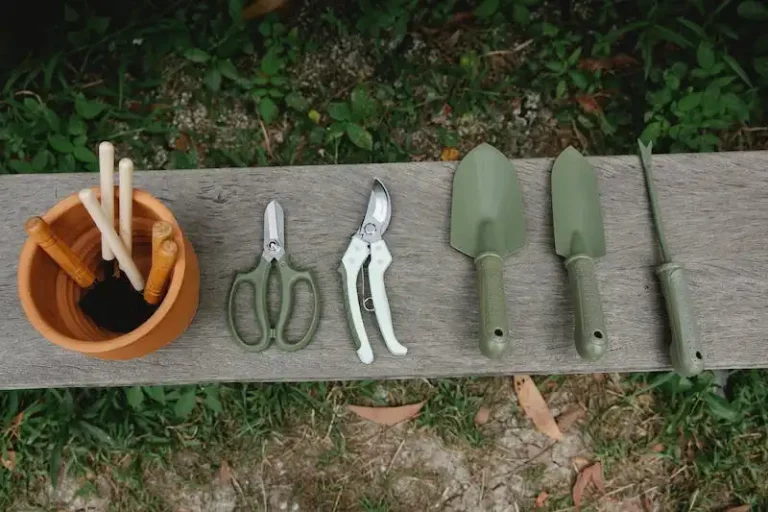The Shinseiki Asian Pear Tree, also known as Pyrus pyrifolia, is a heavy producer of sweet snack-sized fruit. This tree grows well in a variety of climates, from tropical to cold regions. At just 2 years old and 3-4 feet tall, it is already capable of yielding an abundance of fruit.
One of the reasons the Shinseiki Asian Pear Tree is commonly selected for planting is its ability to thrive in different environments. It can withstand both hot summers and cold winters, making it a versatile addition to any garden. This tree grows best in well-drained soil and requires proper spacing of 3-4 feet between each plant.
In terms of fruit production, the Shinseiki Asian Pear Tree is a standout. Its brown fruit is apple-shaped, with a crispy and sweet flesh that is perfect for snacking. In the summer, clusters of fruit begin to appear, and by August, they are ready for harvest.
Growing the Shinseiki Asian Pear Tree is a relatively easy process. It does not need much nitrogen and only requires light pruning. Thinning the fruit is necessary to control the spacing and size of the pears. Some common pests and problems for this tree include blight, scale, and caterpillars. Regular inspections and treatment are needed to ensure the tree’s health.
Propagating the Shinseiki Asian Pear Tree can be done through grafting or by selecting a healthy tree for propagation. This tree can be grown from a seed, but for quicker results, grafting is recommended. Grafting is a process where a portion of a selected tree is joined to a rootstock for propagation. Using this method, the Shinseiki Asian Pear Tree can be grown to produce fruit as early as 2-3 years after planting.
In conclusion, the Shinseiki Asian Pear Tree is a versatile tree that grows well in a range of climates. Its sweet, snack-sized fruit and easy propagation process make it a popular choice for fruit growers. Whether you are a seasoned gardener or a family looking for a new addition to your backyard, the Shinseiki Asian Pear Tree is worth considering.
Asian Pear Tree Care
When it comes to Asian pear tree care, there are several important factors to consider to ensure the health and productivity of your tree. These include propagation, irrigation, maintenance, fertilizer, pest control, and more.
- Propagation: Asian pear trees are commonly grown from grafts or cuttings, as growing them from seeds can result in trees with varying fruit quality and characteristics.
- Irrigation: Asian pear trees require regular watering, especially during hot and dry periods. However, overwatering should be avoided to prevent root rot.
- Maintenance: Pruning is essential for maintaining the shape and vigor of Asian pear trees. It is best done during the dormant season, usually in late winter or early spring.
- Fertilizer: Regular fertilizing is important to promote healthy growth and fruit production. A balanced fertilizer with a ratio of nitrogen, phosphorus, and potassium is recommended.
- Pest control: Asian pear trees can be susceptible to various pests, such as aphids and pear psylla. Regular monitoring and appropriate control methods, such as spraying insecticidal soap or horticultural oil, can help prevent infestation.
- Soil: Asian pear trees prefer well-drained soil with a pH level of 6.0 to 7.5. Amending the soil with organic matter can help improve its fertility and drainage.
- Growing seasons: Asian pear trees usually blossom in early spring and bear fruit in late summer to early fall. The fruit is ready to be harvested when it easily separates from the tree with a gentle twist.
- Temperature: Asian pear trees can tolerate a wide range of temperatures, but they require a certain amount of chilling hours in winter to break dormancy and promote bloom in the spring.
- Watering: Regular watering is essential during the growing season, but overwatering or underwatering can lead to problems. It is important to provide enough water without saturating the soil.
- Cold and frost: Asian pear trees are generally cold hardy, but they may need protection from late spring frosts. Covering the tree with a blanket or using sprinklers to create a layer of ice can help prevent frost damage.
- Dwarf varieties: There are dwarf varieties of Asian pear trees available for those with limited space. These trees are usually 3-4 feet tall and can be grown in containers.
By following the proper care and maintenance guidelines for Asian pear trees, you can enjoy a bountiful harvest of sweet and delicious fruit for many years to come.
SOIL PREPARATION PLANTING
To ensure the successful growth of your Shinseiki Asian Pear Tree, proper soil preparation and planting techniques are essential. Here are some guidelines to follow:
Soil Preparation:
The soil should be well-drained and fertile, with a pH level between 6.0 and 7.0. Adding organic matter such as compost or well-rotted manure can improve the soil’s fertility and drainage. It is also important to ensure that the soil is free from weeds and other plant debris.
Planting:
1. Choose a sunny location for your Shinseiki Asian Pear Tree. It should receive at least 6-8 hours of direct sunlight daily to promote healthy growth and fruit production.
2. Dig a hole that is approximately twice as wide and just as deep as the root ball of the tree.
3. Gently remove the tree from its container, taking care not to damage the roots.
4. Place the tree in the hole, making sure that it is positioned straight and at the same level as it was in the container.
5. Backfill the hole with soil, firming it gently around the base of the tree to eliminate any air pockets.
6. Water the tree thoroughly after planting to help settle the soil and ensure good root-to-soil contact.
7. Apply a layer of mulch around the base of the tree to help retain moisture and suppress weed growth.
Note: Shinseiki Asian Pear Trees are self-pollinating, but planting two or more trees can increase fruit production. The best pollination results come from planting different Asian Pear varieties within close proximity.
Caution: Asian Pear Trees are susceptible to certain pests and diseases, such as psylla. Regular monitoring and control measures may be necessary to prevent damage. Consult a local gardening expert or agricultural extension service for the best pest and disease management methods in your area.
By following these soil preparation and planting guidelines, you can create an ideal environment for your Shinseiki Asian Pear Tree to thrive and produce delicious, apple-shaped fruit for years to come.
WATERING FERTILIZATION
Proper watering and fertilization are essential for the successful growth of Shinseiki Asian Pear trees. Here is a guide on how to care for your tree:
Watering:
Asian Pear trees should be watered thoroughly, especially during the first few years of growth. A general rule is to provide 1-2 inches of water per week, either through natural rainfall or manual watering. However, make sure not to overwater, as this can lead to root rot. To ensure proper watering, it is recommended to use a soaker hose or drip irrigation system, which will deliver water directly to the root zone.
Fertilization:
Asian Pear trees benefit from regular fertilization to support their growth and fruit production. They usually get fertilized in early spring, just before the new growth begins. A balanced NPK fertilizer with equal amounts of nitrogen (N), phosphorus (P), and potassium (K) is suitable for Asian Pear trees. Follow the manufacturer’s instructions for application rates. Organic compost can also be used as a natural fertilizer, applied in a thin layer around the base of the tree.
Diseased or pest-infected trees:
If your Asian Pear tree shows signs of disease or pest infestation, it is important to take immediate action. Brown or discolored leaves, wilting, and spots on the fruits could indicate a problem. Troubleshooting the issue and applying appropriate treatments or remedies, such as organic sprays or removing diseased parts, can help in preventing further infection and maintaining the health of your tree.
Spacing and propagating:
When planting multiple Shinseiki Asian Pear trees for cross-pollination and better fruit production, provide sufficient spacing between each tree to allow air circulation and sunlight penetration. The exact spacing will depend on the size of the mature tree, usually ranging from 12 to 20 feet apart. If propagating from existing trees, propagate using healthy shoots or by grafting onto appropriate rootstocks. This ensures the new trees inherit the desirable traits and characteristics of the chosen parent tree.
Harvesting and storing:
Asian Pear trees usually start producing fruit after 2-3 years of growth. Once the pears have reached their full size and color, they’re ready to be harvested. Gently twist each fruit upwards to break its stem from the branch. Harvest the pears when they are still firm and crisp. To store the pears, place them in a cool, humid environment such as a refrigerator crisper drawer. Pears can stay fresh for several weeks when stored properly.
With proper watering and fertilization, your Shinseiki Asian Pear tree will grow luscious fruits and provide you with a bountiful harvest year after year. If you have any specific questions or concerns about watering or fertilizing your tree, don’t hesitate to ask a gardening expert for guidance.
PRUNING
Pruning is an important practice for maintaining the health and productivity of a Shinseiki Asian Pear Tree. Proper pruning means removing dead, damaged, or diseased branches, as well as shaping the tree for better fruit production.
Here are some general tips and troubleshooting about pruning:
- When to prune: Pruning is usually done during late winter or early spring, before the new growth begins.
- Tools: Use clean and sharpened pruners or loppers to make precise cuts.
- Pruning for shape: Remove any branches that are crossing or rubbing against each other. Maintain a central leader or choose an open-center or modified central leader form in pruning.
- Pruning for fruit production: Thin out branches to allow sunlight and air circulation, which promotes fruit quality and helps prevent diseases.
- Pruning to control height: The Shinseiki Asian Pear Tree can be pruned to a desired height. If you want a dwarf tree, you can prune it to a shorter size.
- Pruning for alternate-year fruit production: To stimulate fruit production in trees that alternate heavy and light harvest seasons, remove some fruit-bearing wood after a heavy crop.
- Pruning for resistance against pests and diseases: Remove any diseased or pest-infested branches and destroy them. Regular pruning can help control pests and diseases by opening up the canopy.
- Pruning for propagating: Pruning can also be used to propagate new trees. Cuttings from healthy branches can be used to create new plants.
- Pruning young trees: Young Shinseiki Asian Pear Trees generally need less pruning. Focus on shaping the tree and removing any damaged or crossing branches.
- Pruning mature trees: Mature trees require more pruning to maintain their productivity and shape. Remove any dead or diseased branches and thin out crowded areas.
Remember to always clean your pruning tools with a disinfectant, such as a solution of bleach and water, after each use. This helps prevent the spread of diseases between trees.
After pruning, it is advisable to mulch around the base of the tree to conserve soil moisture and suppress weed growth. Proper irrigation and fertilization are also important after pruning to support the tree’s growth and fruit production.
By following good pruning practices, you can ensure that your Shinseiki Asian Pear Tree remains healthy, productive, and aesthetically pleasing.




